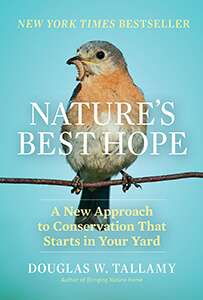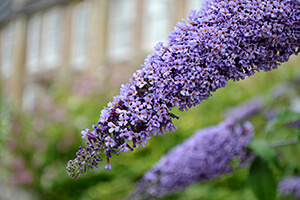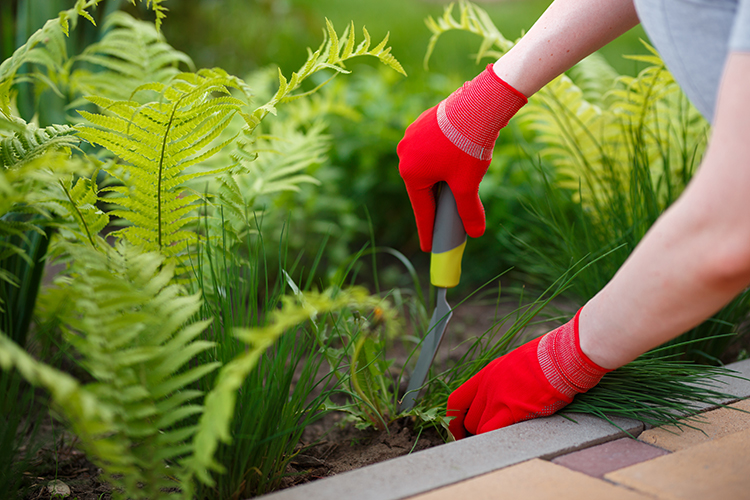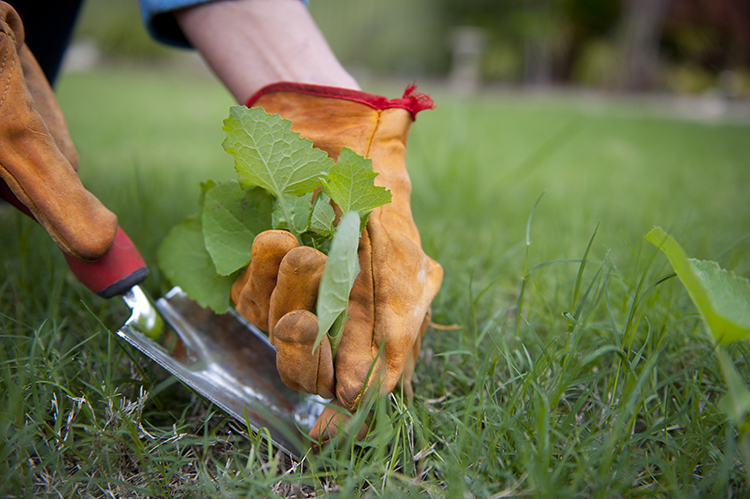
Lawn Care 101 – Raking
Our first video of this segment is super straightforward, but some get it wrong. Check out this quick video to ensure you’re not causing more harm than good to your lawn and its root system when raking.

Our first video of this segment is super straightforward, but some get it wrong. Check out this quick video to ensure you’re not causing more harm than good to your lawn and its root system when raking.

There have been myriad reports over the past few months from backyard birders about the decrease in visitors to their feeders. If you’ve noticed this too, you’ll be pleased to know there are things we can each do to radically reverse the decline of small wildlife in our yards.
 It’s all well and good to provide seed and suet for birds, but the solution to population decline requires us to look a little closer. Instead of thinking short-term, say season by season, let’s look at it from a yearly perspective, or even longer.
It’s all well and good to provide seed and suet for birds, but the solution to population decline requires us to look a little closer. Instead of thinking short-term, say season by season, let’s look at it from a yearly perspective, or even longer.
What we choose to plant directly affects the quantity and activity of small and large living organisms in our yards. If our only priority is a yard that looks pretty, we may be missing opportunities to positively impact the local ecosystem.
We should also consider biodiversity – choosing a variety of species that co-exist nicely. If we also opt for plants and trees that require minimal resources for survival, then we can move toward a landscape that not only looks good, but is low-maintenance and welcomes beneficial interdependent activity above and below ground.
 Wildlife Ecologist Doug Tallamy, author of “Nature’s Best Hope: A new approach to conservation that starts in your yard” offers strong arguments and simple tips for being a backyard conservationist. Here are a handful of his suggestions:
Wildlife Ecologist Doug Tallamy, author of “Nature’s Best Hope: A new approach to conservation that starts in your yard” offers strong arguments and simple tips for being a backyard conservationist. Here are a handful of his suggestions:
 The good news is this isn’t an all-or-nothing proposition. You don’t have to swap out all of the plant life in your garden and risk disrupting your current modern or tropical motif, for example. Plants that are native to Ontario come in a wide range of shapes, sizes, and colours, so you’re sure to find a few cultivars that appeal to you.
The good news is this isn’t an all-or-nothing proposition. You don’t have to swap out all of the plant life in your garden and risk disrupting your current modern or tropical motif, for example. Plants that are native to Ontario come in a wide range of shapes, sizes, and colours, so you’re sure to find a few cultivars that appeal to you.
And adding just a few native plants and trees will produce favourable results. Visit our June 2019 post on Choosing Native Ontario Plants for Your Garden or head over to our Native Ontario Plants Pinterest Board for some inspiration.
As always, if you need assistance choosing the right native plants and trees for your yard, or you just want to get started on a landscaping project, contact us.

There are several classifications and definitions of weeds. However, in the very simplest terms, a weed is an unwanted plant in your lawn or garden.
No plant that’s perceived as a weed today has always been a weed. Once upon a time, they lived in a benign location and had no notable negative impact on their surroundings.
The turning point – when a plant becomes a weed – is when it invades a space where it is not desired and/or has an undesirable impact on people, animals, or other vegetation.
So, if they weren’t there to start with, how did those weeds get into your yard? They were carried there – transported by vehicle, animal, or on the wind.
And many seeds don’t need a whole lot of TLC to germinate. As long as they have oxygen and water, and a bit of sunlight, they will grow. So, the big question:

Let’s face it – weed avoidance is not a thing. However, there are strategies that will help you tame the beast and minimize the negative impact of weeds.
Weeds in your lawn and garden are the bane of any homeowner’s existence. But, armed with the information above, you’ll have a better understanding of where they’re coming from and how to control them.
Ready, set, weed!

When it comes to landscaping planning and design, many people know what they like when they see it, but just don’t know how to transform their garden from its current state to what they envision. There’s a lot to consider – your preferred style, available space, soil type, irrigation, sun exposure, and maintenance expectations.
Gardens take time, energy, and money to establish and maintain, but starting with a plan can help minimize ongoing cost and effort. When customers call A Touch of Dutch Landscaping & Garden Services we create a plan that incorporates all of the aforementioned considerations. But if you’d like to create a plan of your own, here are some tips for creating something that will work for you and your outdoor space.
Landscaping Planning and Design – Understand Your Space
While we recommend you have at least a general idea of the space you’re working with, many find it helpful to draw or map out the space to get an idea of square footage, nearby elements, sun exposure, and more.
If you are making over an existing garden, consider what has and hasn’t worked in the past. Regardless of whether you’re updating or starting from scratch, think about the location of the garden. Is it against a fence or wall, around a porch, deck, or patio, or will it be exposed on all sides? You’ll want to select plants in a range of sizes to add dimension, and whose height and width will be appropriate for the size of the garden without contributing to a too-sparse or overcrowded appearance.
Understand Your Style
One of the worst times to decide on your style is probably when you’re at a garden centre or nursery. Everything on display is typically in season at that time and so their showy foliage and/or blooms are competing for your attention. Instead, make note of designs that you’re drawn to.
Whether you’re using magazines, Pinterest, or Houzz, or even out and about in your own neighbourhood. Take pictures or jot down notes about general styles and specific elements that you like. This practice really helps inform your plan, so that when you go shopping for plants, you don’t get swayed by some pretty shrub that’s not remotely close to what you’re after.
Understand Your Maintenance Threshold
Maybe you’re a green thumb. But, maybe you’re not. While some amount of maintenance is required for every garden, regardless of style or size, there are ways to minimize the amount of upkeep required to ensure a landscaping project continues to thrive, long term.
If you’re updating an existing flowerbed, consider which individual plants require the most maintenance and get rid of them. When planning for new garden elements, be aware of drought tolerance, sun exposure requirements, standard height and width projections, preferred soil types, and what else is or will be planted in the space. If you make poor plant choices, keeping them alive is going to require more effort than you might be willing to expend. Things like extra watering, fertilization, amending the soil, and trimming might be added to your to-do list on a regular basis.
When you’re putting your plants in the ground, consider adding a layer of mulch or stones. Not only do these extra layers help keep weeds at bay, but they also add a layer of insulation to the soil, keeping warmth in while slowing down evaporation. This means both less weeding and less watering!
Understand Your Limits
If you’re short on time, energy, inspiration, or knowledge, consider leaving the design and installation to a professional landscaper. This will this ensure your project gets done in a timely manner. What’s more, your wishes will be factored into the landscape design to ensure that the end result is beautiful and done right, and meets your design standards.
If you do want to enlist the services of a landscaping company, the sooner you contact the landscaper the better. While we don’t generally start installing softscaping, hardscaping, and water features until May, planning, design, and scheduling gets underway much earlier in the year. So, by the time planting season actually rolls around, we already have much of our season planned. And weather is a big factor, too. Cold weather that persists longer than usual into the spring or that starts earlier than usual in the fall affects our schedule, as does each day of inclement weather during the season.
There’s a saying that if you fail to plan, you plan to fail. That’s probably as true in landscaping as it is in anything else. Having a garden plan can save you time, effort, and money, before during and after you plant. So, investing some time and effort into formulating a plan will pay off. And if you aren’t up for doing your own landscaping planning and design, contact us to discuss how A Touch of Dutch Landscaping & Garden Services can help you design and install the garden you’ve been dreaming of.